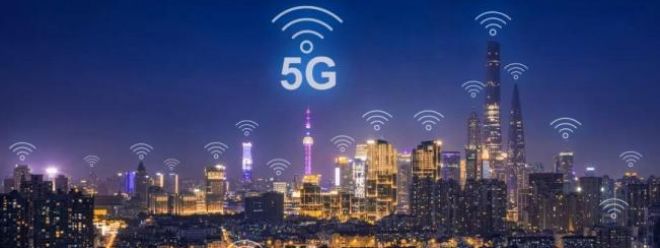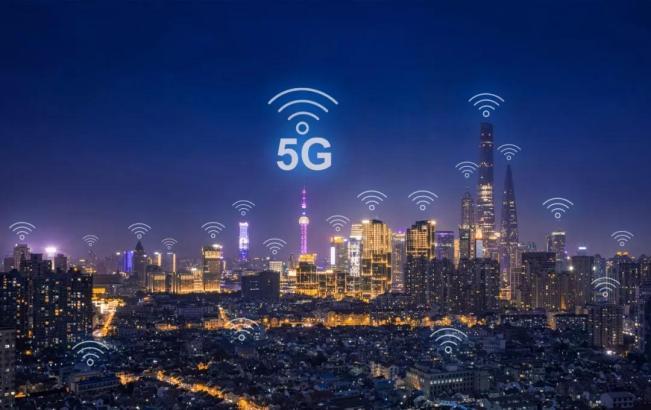5.5G is not only 0.5 more than 5G

5.5G, also known as green 5G, can reduce energy consumption
through smart energy-saving technologies, new materials, new energy
technologies, and new network architectures, empowering all industries to
achieve low-carbon The achievement of the "dual carbon" goal of
Zhonghe has contributed to my country's energy conservation and environmental
protection cause.
Recently, China Telecom and China Mobile have successively
released financial reports for the first half of this year. In the continuous
5G network construction and sharing with China Unicom, China Telecom has
460,000 5G base stations in use; as of the end of June, China Mobile has opened
501,000 5G base stations. Base station.

The financial report data of the two companies shows that my
country is about to usher in the milestone moment when the number of 5G base
stations exceeds one million, and the development of 5G will enter a new
watershed.
Therefore, accelerating the development of 5G-Advanced or
5.5G is already on the line.
Duan Xiaodong, vice president of China Mobile Research
Institute, said: “5G-Advanced will define new goals and new capabilities for
the follow-up development of 5G, and 5G will therefore generate greater social
and economic value.”
Both enhance the old scene and expand the new scene
The first phase of 5G standards has begun to be
commercialized, but 5G standards and technologies are still developing and
evolving.
On April 27th, the standardization organization 3GPP
formally confirmed the name of 5G evolution as 5G-Advanced at the 46th Project
Cooperation Group (PCG) meeting, marking a new stage in the development of
global 5G technology and standards.
Duan Xiao Dong told a reporter from Science and Technology
Daily: "The core goal of 5G is to serve thousands of industries. Although
the global 5G development has achieved gratifying results, how to release the
potential of 5G and truly serve the industry is still a very important topic
before us."
Wen Ku, secretary-general of the China Communications
Standards Association, emphasized: "Although the development of the 5G
application industry has achieved breakthrough results, it is still in the low
application level and the initial stage of commercial scale exploration. It is
necessary to accelerate the application demonstration and exploration process
to drive key technologies in various integration fields. Breakthrough and
industrialization development, forming large-scale applications from 1 to N
pre-replication."
According to Deng Wei, deputy director of the Institute of
Wireless and Terminal Technology of China Mobile Research Institute, facing the
requirements of low latency, high reliability, and high-precision
synchronization and positioning required by complex industrial scenes, the
current 5G network capabilities still need Further evolution.
"5G needs to continue to evolve to meet the needs of
more diverse and more complex full-scenario IoT; at the same time, it will
enhance the vitality of 5G, lead the development and evolution of the 5G
industry, and accelerate the intelligent upgrading of thousands of
industries." Zhang Ping, academician of the Chinese Academy of
Engineering, pointed out, 5.5 G mainly focuses on the expansion of vertical industries,
and its network capabilities can better assist vertical industries.
He introduced that in addition to 5G’s original mobile
bandwidth enhancement, ultra-reliable and low latency, and the "triangular
capabilities" of massive machine communications, 5.5G adds uplink
ultra-wideband, broadband real-time interaction, and communication perception
fusion capabilities, making the original The three major standard scenarios of
5G in China are expanded into a more capable "hexagon", which not
only enhances the old scenario, but also expands the new scenario.
Dual-chain integration and development of 5.5G has become
an industry consensus
As Wen Ku said, China's 5G industry is developing rapidly,
and various applications have put forward higher demands on the network, posing
new challenges to network architecture, performance, latency, and security.
On August 3, China Mobile and its industry partners released
the "5G-Advanced Innovation Chain Industry Chain Integration Action
Plan", which aims to clarify the 5G-Advanced innovation chain industry
chain integration action goals and key measures.
Huang Yuhong, vice president of China Mobile Research
Institute, said: "5G-Advanced dual-chain integration will continue to
improve 5G network capabilities and industrial innovation capabilities, and
provide new momentum for the transformation and upgrading and high-quality
development of various industries."
Gao Tongqing, deputy general manager of China Mobile,
introduced that the "5G-Advanced Innovation Chain Industry Chain
Integration Action Plan" points to the three goals of "excellent
network, intelligent life, intelligent simplicity, low carbon and high
efficiency".
Deng Wei said that 5G-Advanced is mainly to provide
corresponding technical support to meet the needs of the digital and
intelligent transformation of society in the future.
After the technical direction is clear, the key lies in how
to accelerate its maturity and make it serve the economic and social
transformation of digital intelligence as soon as possible. This requires the
cooperation and cooperation of the industrial chain.
Gao Tongqing advocates the industry to vigorously promote
cross-field and cross-disciplinary integration and innovation, deepen the
synergy of industry, university, research and application, lead and create
demand and jointly define standards; at the same time, focus on the new needs
of 5G evolution, solve industry pain points, and ensure the innovation chain
Accurate, efficient, and coordinated to achieve breakthrough innovations in 5G
evolution technology; in addition, to condense industry forces, keep up with
the pace of standards, carry out prototype development and experimental
testing, achieve two-way rapid response and iterative optimization, and create
a new innovation chain industry chain integration development Paradigm provides
strong support for the digital society.
Wen Ku said: "5G-Advanced has become an industry
consensus. The innovative 5G-Advanced solution will help China Mobile and the
entire Chinese communications industry develop high-quality 5G networks, and
provide users in various industries with more high-quality and intelligent
products and services."
Wang Tao, Huawei's executive director and president of ICT
products and solutions, emphasized that in order to realize the 5.5G industry
vision, 5.5G needs spectrum reconstruction, uplink enhancement, full-scenario
IoT, synesthesia, L4 autonomous driving network, green and low-carbon, etc.
Continuous innovation in 6 directions.
Upgrade from "interconnection" of all things to
"smart connection" of all things
The industry has this consensus that 5.5G is not only an
upgrade of communication technology, but also represents a new ecology and new
opportunities, bringing more wisdom to many scenarios.
VR live broadcast, 8K high-definition video, panoramic live
broadcast and other applications allow people to initially experience the
capabilities of 5G based on eMBB (enhanced mobile broadband) scenarios. What
surprises can the 5.5G network bring us?
"Compared with the basic version of 5G, 5.5G is finally
expected to further increase the network capacity by more than 10 times."
Wang Tao predicts that the future 5.5G network will be able to carry more IoT
devices and eventually carry more than 100 billion connections.
From Wang Tao's introduction, first of all, 5.5G can more
finely meet the application scenarios of the Internet of Vehicles and the
Internet of Things such as autonomous driving, low-altitude logistics drones,
etc., especially to increase the safety factor of autonomous driving to help
its commercial landing. Secondly, 5.5G is also known as green 5G. It can reduce
energy consumption through smart energy-saving technologies, new materials and
new energy technologies, and new network architectures, empowering all
industries to achieve low-carbon energy conservation across the entire industry
chain, and helping the country’s carbon reach. The achievement of the
"dual carbon" goal of peak, carbon neutrality, and support for my
country's energy conservation and environmental protection undertakings.
5G has achieved remarkable results today, but it still
cannot meet the needs of all walks of life.
According to the 5.5G vision proposed by Huawei, the three
new application scenarios of Uplink Ultra-Broadband (UCBC), Broadband Real-Time
Communication (RTBC) and Communication Sense Convergence (HCS) expanded by 5.5G
will further tap the core value of 5G technology.
For consumer-oriented 4G and 5G networks, the downlink is
more important than the uplink, but for all walks of life, there are scenarios
where the uplink is more important than the downlink. The UCBC scenario will
strengthen the 5G uplink capability and expand the bandwidth by at least 40
times on the existing basis, which can meet the upload requirements of machine
vision and massive broadband Internet of Things in scenarios such as enterprise
manufacturing.
The RTBC scene will support large bandwidth and low interaction
delay, and the bandwidth at a given time delay will be increased by 10 times.
The immersive experience of people such as XR Pro and holographic applications
interacting with the virtual world will therefore obtain broader development
conditions.
The HCS scene supports the integration of communication and
perception, and can provide centimeter-level high-precision, low-power indoor
positioning services. In the next 10 years, autonomous driving will enter
people's lives more and more, but to achieve L4 and L5 autonomous driving,
driving road coordination is indispensable, which requires the network not only
to provide connectivity, but also to have perception capabilities. Therefore,
the integration of communication and perception becomes particularly important.
Wenku believes that a huge task facing my country is to meet
the needs of 5G application innovation, solve application fragmentation and
other issues, and accelerate the implementation of innovative applications in
virtual reality, Internet of Things, smart manufacturing, smart medical, and
Internet of Vehicles.
However, 5G is only a starting point today, and 5.5G is only
a node on the road to upgrade network capabilities. What kind of capabilities
the future network will give mankind still requires us to continue to innovate
and explore.